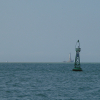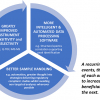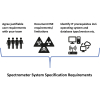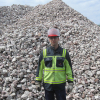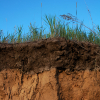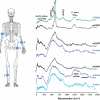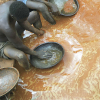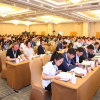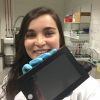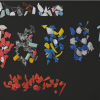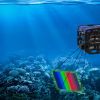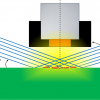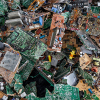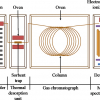Articles and Columns
Estuaries are where much of our marine pollution is to be found, being the gateway between the land and the ocean. They are also where much of our seafood comes. So, knowledge of elemental contamination in estuaries is vital to protect us from the ingestion of polluted seafood.
Rechargeable lithium ion batteries (LIBs) have a significant role in modern society: from portable electronic devices to electric cars and bicycles. Indeed, I would be surprised if anyone reading this does not have a LIB on or near them now. Both NMR and EPR spectroscopies and their imaging modalities can provide useful information, which will prove important in battery research and the development of ever improving batteries.
A recent conference on Extractables and Leachables in Hamburg not only allowed two ex-colleagues to meet after many years, but also provided information on developments and trends in the regulatory environment. Not only are ever lower levels of detection required, but also analytical requirements are being placed on companies further back in the materials’ supply chain that have not had to make such considerations before.
The Quality Matters Column highlights how the reference material industry has grown. Peter Jenks asks for your help in rerunning a 2001 survey with aim of establishing how users’ use of and experience with reference materials has changed. Whilst most questions are optional, such surveys are of the greatest value if most questions are answered. We hope you can spend a few minutes to complete the survey at https://www.spectroscopyeurope.com/reference-material-survey-2019.
This column shows how well the Theory of Sampling is able to address the powder sampling difficulties that have plagued the pharmaceutical industry for a long time. Definitely, a practical example of the importance of representative sampling.
Do you have the budget for a new instrument? Well, stop… wait! Tony Davies and Marian Draaisma have very useful guidelines. They run through questions you should be asking yourself (and your team), information you should gather and how you should go about the selection process for a new spectrometer. If you’re not buying just now, this is definitely a column you will want to bookmark for future reference.
Here starts a second round of Sampling Columns, which have been a fixture in almost every Spectroscopy Europe issue since its inauguration in 2014. The first series, which concluded in the last issue, provides a stand-alone collection for easy, free access to a first curriculum of the Theory and Practice of Sampling. The second series of Sampling Columns will focus on sampling in practice, special issues and features (left out of the first series), educational gems and other bits-and-bobs. The last two items comprise a mixture of topics and issues that also will illustrate and educate readers, but specifically only after a first minimum of TOS competence has been acquired
The authors describe work they are doing to develop a green methodology to determine soil organic matter. If the World’s population is to be fed in the future, improvements to agricultural productivity are required and soil fertility will be key to this. Current methodologies are time-consuming and expensive, but visible-near infrared spectroscopy has the potential to replace them.
Burned bones are often found in archaeological sites as a result of fire or funerary practices and are often the only preserved human remains. Using inelastic neutron scattering, infrared and micro-Raman spectroscopies, the authors can reach definitive conclusions as to the temperature at which the bone was burned. This enables archaeologists and anthropologists to learn more about how ancient civilisations used fire for funerary, burial or cooking purposes.
There are now a huge number of small-scale gold miners who scratch a living (literally) from poor-quality gold deposits. One essential step in the process to produce the end product, pure gold, uses mercury to capture the gold mixed in with rock and other minerals. The quantity of mercury released annually by small-scale gold miners alone is estimated to be 3000 tons—37 % of global mercury pollution! Whilst this causes local pollution, much of the mercury ends up being distributed around the world as droplets in “mercury flour”. This enters the water supply and hence the food chain of us and other animals. Amongst all the bad news, there is a glint of good news. Chemistry can come to the rescue and can help recover the mercury left behind by the process, and, because gold itself is a by-product, the process could be self-funding.
Tony Davies and Roy Goodacre raise some issues around the reliance just on vast quantities of data collection in omics experiments. As they put it, should we “just keep throwing the mass spectra, nuclear magnetic resonance data sets and our ion mobility fingerprints onto a big pile for the statisticians to fight over?”.
A report on the 9th World Conference on Sampling and Blending (WCSB9), held in Beijing from 7–9 May 2019.
Some compliance requirements would seem to make impossible demands on the performance specification of “fitness for purpose” for ultraviolet spectrometers; Chris and John unravel what’s going on.
Tony Davies, Peter Lampen and Robert Lancashire are worried about their metadata, or perhaps the lack of it. With the explosion of data and ways to mine and make use of it, having accurate and appropriate metadata about analytical data sets is vital if they are to be reused efficiently or at all. This is also an area that is being increasingly targeted by regulators, with the US FDA issuing guidance at the end of 2018; others will follow. You have been warned.
An interesting insight into, well, a week in the life of the author as a fourth-year PhD student. Katie is working on investigating a way of detecting liver damage using spectroscopy, which is “about as interdisciplinary as you can get”! I’m sure all readers will find it interesting and it may be helpful for those you know who may be considering a PhD.
The authors look at two important areas of recycling of waste materials: concrete and plastics. If aggregates are to be recycled from concrete, the presence of pollutants (plastics, foams, brick etc.) and the degree of removal of cement mortar from the aggregates must be assessed and monitored. NIR hyperspectral imaging with PLS does a good job of both tasks.
Coral reefs have been used as examples of climate change in action for decades, since the “bleaching” caused by corals stressed by heat expelling their symbiotic photosynthesising algae is such a dramatic effect. Jonathan Teague, Jack Willans, Michael Allen, Thomas Scott and John Day describe their work in developing a hyperspectral imaging system that can be deployed on a submersible remotely operated vehicle to monitor coral health through changes in their natural fluorescence
Total reflection X-ray fluorescence (TXRF) is a “Cinderella” technique: not widely known but with great potential. The author and other members of the TXRF Workgroup are making strenuous efforts both to spread the word about TXRF and to improve communication within the TXRF community. As Ramón points out, atomic absorption or plasma spectroscopies may be the “go to” techniques for many, but TXRF is worthy of consideration.
This column concludes the first series of Sampling Columns. More will appear in a sequel series, mainly aimed at presenting practical examples, case histories, demonstrations—all of which will assume that the value of only practicing representative sampling has been fully acknowledged and the relevant know how has been comprehended. Here, we end the first educational exposé of the Theory of Sampling (TOS) by focusing on the current state of awareness and with an acknowledgement of the need to involve TOS in all relevant international scientific fora, in technology, industry and in the commercial marketplace.
Hafiz Abdul Azeem recently presented some interesting results from his work on atmospheric aerosols. Following their capture, he combined the optimisation of the extraction process with chromatographic separation and mass spectroscopic detection to identify various sources of pollution through their emission marker fingerprints.1 One spin-off of this work has been the use of a specific biomarker from cellulose combustion to potentially warn of low-heat smouldering in, for example, agricultural materials in bulk storage.

